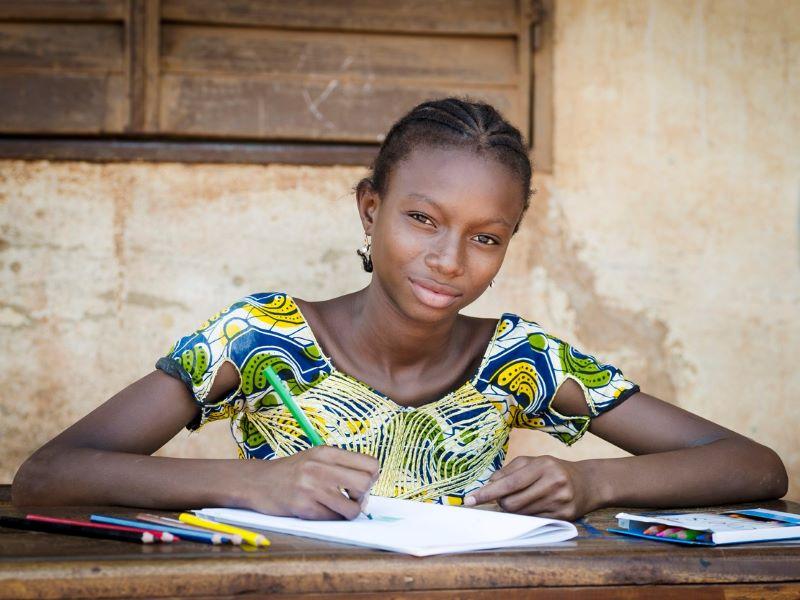
A sustainable strategy for educating the next generation of African youth
Young women and men from African countries will soon comprise the most significant group of globally mobile students. What if universities met them with a sustainable, positive vision for their communities and the host institutions? Here are practical strategies and resources
You may also like
Popular resources
Awa Dembele came to the US from Mali in 2022 with intermediate English skills (her third language). Within a year, working part-time on campus to support herself, she advanced her English and was accepted into a computer science programme. I saw her soon after she got the good news. “I’m so excited and a little nervous,” she said with a signature exuberant laugh, and then mused quietly: “As a kid, even in my small town, we all dreamed of studying abroad.”
Few from her hometown reached the goal; in Mali, one of the poorest countries in Africa, Unicef reports that only 12 per cent of girls and 23 per cent of boys complete secondary school.

Dembele’s story vividly illustrates a pressing challenge and opportunity that universities worldwide are just beginning to recognise: the exponential rise in the number of young Africans seeking higher education or vocational training. While most global regions face an ageing population, Africa faces the opposite challenge: its median age is about 19. By 2050, its working-age population is expected to make up 25 per cent of the global workforce.
As I see it, universities have two divergent options in planning for these global trends. One strategy is to recruit students from African countries through traditional channels, focusing on the short-term internationalisation goals and funds of the host university. This approach has begun; in 2022, the number of university students from Sub-Saharan Africa in the US increased 18 per cent.
- Resources on how universities can support the UN Sustainable Development Goals
- THE podcast: cross-cultural communication in the international classroom
- Advice for teachers around English as a second language in higher education
A different approach is possible. What if universities and colleges worldwide met the opportunity of educating Africa’s youth with a sustainable vision? The United Nations Sustainable Development Goals (referenced by many universities in their strategic plans) delineate the term sustainability into 17 goals that will result in net positive educational, economic and environmental outcomes for developing countries. In this vision, international education is a global partnership that addresses the real risks for the sending countries, namely the Global South-to-North brain drain, while still meeting the receiving universities’ goals.
This sustainable vision could include the following practical strategies and resources. They are based on my experience teaching and organising campus support for international students on two US campuses, writing about sustainability, and working with women and youth in Malawi.
Expand global access to higher education – especially for African women
Effectively contributing to education in Africa demands expanding access beyond the privileged few. Although educational attainment gains across the continent have been dramatic in recent decades, in 2021 only one in two children aged 14 and above attended either upper secondary school or higher education, according to Unicef figures. Moreover, education access for women has stalled. In 2020, gender parity in higher education across Africa was 7.6 (compared with 1.1 worldwide), as reported in the World Bank’s Gender Data Portal.
Forward-looking institutions have modelled effective ways to expand access to university and vocational education in Africa in several ways.
One proven method is improving information flow through mass media. Well-targeted media campaigns are critical in marginalised rural and urban areas seldom reached by face-to-face resources.
Institutions must also seek and develop scholarship sources for women. There are African organisations that curate lists, such as Advance Africa. Many emerging funds also target women, such as the US Department of State’s African Women's Entrepreneurship Program and Zawadi Africa education fund.
Expand appreciation of African cultures on campus
While Western media is beginning to move beyond the single story about Africa, more profound knowledge about the continent’s 54 countries should be a priority for international educators. An innovative, university-based method with proven success in reducing bias and stimulating intercultural exchange is structured storytelling. These examples are a good place to start.
- Storytelling pedagogy is a well-documented classroom method for intercultural communication. I have observed how the “I am from” activity can enhance trust and knowledge across cultures in just an hour or two of shared reflection.
- Structured but informal round-table discussions led by trained student facilitators. One university offered these as a monthly multicultural coffee hour, with tables organised by language.
- Expanded promotion of local resources. Many colleges have staff and students of African heritage, and faculty with specialised knowledge but, as with other resources, they tend to get siloed.
Seek partnerships with African universities and other institutions
Last, a sustainable vision for African higher education demands an alternative to expanding the Global South to North stream of youth seeking opportunities. Instead, a two-way pipeline is possible through long-term relationships and educational exchange. The following is an initial list of university resources for exploring these options.
- The Hali Access Network is a coalition of non-profit organisations and schools that support high-achieving, low-income African students and help recruit universities to connect with students.
- African faculty development and exchanges: the Schlumberger Foundation provides training and networking for female faculty in STEM fields in developing countries.
- Expanding access to online training in Africa: to meet the exponential expansion of the youth population, African countries seek to expand affordable, scalable training that meets local employment demand. Foreign universities have begun to partner to meet this demand.
As I have witnessed among many international students, Awa Dembele’s ambition is matched by a deep desire to help her community. “The basic value I learned growing up was helping others whenever you see a need,” she reflected. She already dreams of applying her computer science skills to help bridge Mali’s digital and educational divides. Universities should imitate her values in their strategies to partner sustainably with African countries to meet their rising educational demands.
Melissa Aberle-Grasse is a senior lecturer in the Georgia Tech Language Institute at Georgia Institute of Technology.
If you would like advice and insight from academics and university staff delivered direct to your inbox each week, sign up for the Campus newsletter.


